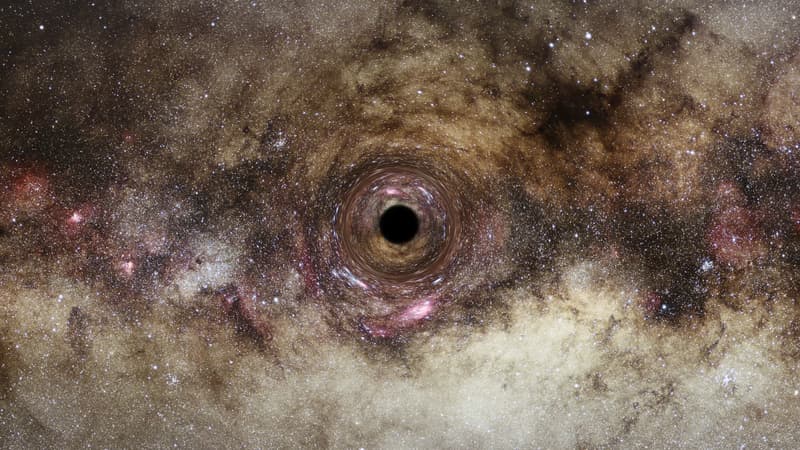Astronomers have detected and measured one of the largest black holes ever observed using a new technique, which should reveal more about the thousands of these cosmic giants expected to be discovered in the coming years.
It is the first whose characteristics are determined thanks to the gravitational lens detection technique. This phenomenon is caused by the presence of an object so massive (a galaxy or a supermassive black hole) that it bends space-time. Light from a distant source appears distorted when it passes close by.
“Good luck”
But while we can see a galaxy, we literally can’t see a black hole. This cosmic object has the particularity of being so dense that not even light can escape, making it invisible.
This time the astronomers were “very lucky,” says James Nightingale, an astronomer at Britain’s Durham University and first author of the study. They were able to observe light from a galaxy located far behind the black hole, and whose path appeared to be deflected by the black hole, some two billion light-years from Earth.
It is said that most galaxies have a black hole at their center. But until now, to detect their presence it was necessary to observe the energy emissions they produce when absorbing matter that has ventured too close. Or noticing its influence on the trajectory of the stars that orbit around it.
These techniques, however, only work for black holes close enough to Earth.
The gravitational lens technique allows astronomers to “discover black holes in 99% of galaxies that are currently inaccessible” to traditional observation, because they are too far away, says the astronomer.
The discovery by James Nightingale and his colleagues was based on computer simulations and images obtained by the Hubble Space Telescope. These observations confirm and explain those made 18 years ago by an astronomer from Durham University, Alastair Edge, who suspected the presence of a black hole at the center of the galaxy Abell 1201.
Source: BFM TV


